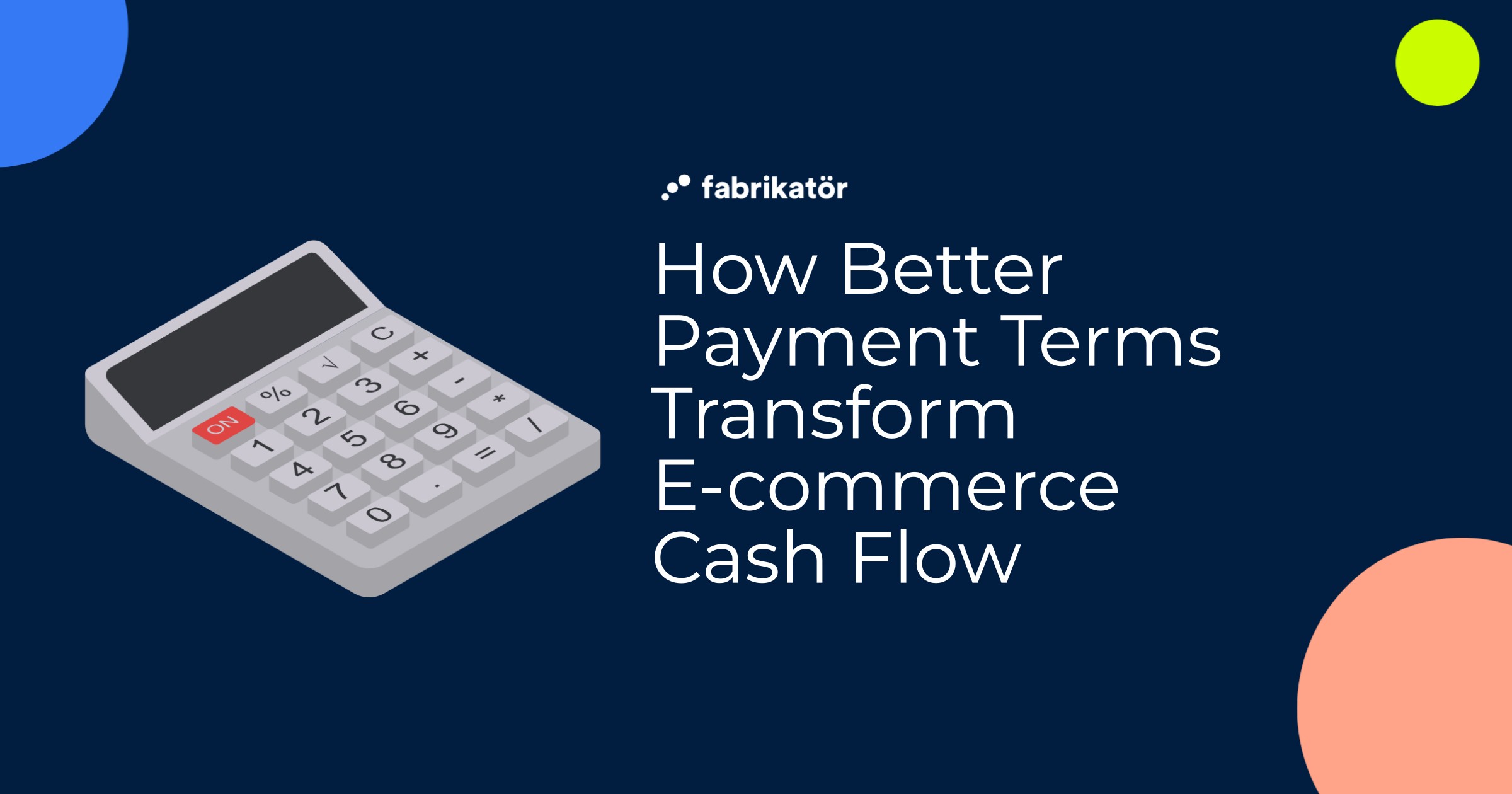Automated Inventory Replenishment eCommerce [101 Guide]
![Automated Inventory Replenishment eCommerce [101 Guide]](https://cdn.prod.website-files.com/61bc48c902de771621f283b2/65eaeac33536e8f3de615ce6_inventory%20replenishment%20.avif)
Managing inventory is a daily responsibility, packed with numerous details to handle. Especially when the number and variety of your products increase, optimizing your inventory properly becomes vital for keeping your eCommerce business running smoothly. Unexpected customer demand, stock issues, and global events may result in problems in your inventory. That’s why today’s topic is inventory replenishment in eCommerce. 📦✨ Let's start from scratch and revisit all the details: what inventory replenishment is, the most effective methods to manage it, the importance of choosing the right tool for it and so much more! 🚀
What is Inventory Replenishment?
Inventory replenishment actually represents an inventory flow where the right product is ordered, received, and delivered to the customer at the right time. Shopify defines inventory replenishment as the process of maintaining a business’s stock levels. The goal of inventory replenishment is to ensure that you have enough inventory on hand to meet customer demand and avoid out of stock and overstock.
Inventory replenishment also involves tracking and analyzing sales trends and supplier capabilities to determine how often you should restock. Effective inventory replenishment strategies help you maintain an efficient supply chain, minimize costs, and meet customer demand on time. To manage the inventory replenishment process smoothly, there are some methods to apply, let’s discover together.
Stock Replenishment Process for Ecommerce
The stock replenishment process is a critical function for ecommerce businesses to ensure they are not left with stockouts or excess inventory. By optimizing this process, companies can maintain adequate stock levels, improve cash flow, and ultimately enhance customer satisfaction. In ecommerce, where customer expectations for fast shipping and availability are high, having an efficient stock replenishment system is key to staying competitive.
Key Elements of the Stock Replenishment Process for Ecommerce:
- Real-Time Stock Monitoring: Ecommerce businesses need real-time visibility into their stock levels across multiple channels and warehouses. This allows for quick identification of items that are running low and need to be replenished. Real-time monitoring also helps in avoiding overstocking, which can lead to higher storage costs.
- Automated Replenishment: Automating the replenishment process ensures that orders are placed with suppliers as soon as stock hits a predefined reorder point. This reduces the manual effort involved and ensures that stock is replenished before reaching critical low levels. Tools like Fabrikatör offer automated stock replenishment, helping businesses maintain optimal stock levels effortlessly.
- Supplier Lead Time Management: Efficient replenishment involves factoring in supplier lead times, ensuring that new stock arrives just in time to meet customer demand. This prevents stockouts while minimizing excess inventory. Coordinating effectively with suppliers and forecasting lead times is crucial for seamless replenishment.
- Multi-Warehouse Management: For ecommerce businesses with multiple fulfillment centers, it’s essential to ensure that stock is replenished in the right location. A well-coordinated replenishment system will distribute inventory across different warehouses to meet regional demand and reduce shipping times.
By implementing an optimized stock replenishment process, ecommerce businesses can ensure they have the right amount of inventory at all times, leading to better cash flow, fewer stockouts, and an overall improvement in customer satisfaction.
Methods of Inventory Replenishment in eCommerce

Inventory replenishment is a process, and it operates like a flow that we want to progress seamlessly. To achieve this, there are four essential inventory replenishment methods in eCommerce: the Top-off Method, Periodic Method, Reorder Point Method, and On-demand Method. Each method has advantages and challenges, applicable to different business models and market dynamics. Let's explore these methods in detail and uncover their practical applications in the eCommerce world.
1. Top-off Method
The Top-off Method is commonly used by retailers and distributors who need to ensure that popular items are always in stock. This method involves replenishing stock during slower periods to keep shelves fully stocked and ready for high-demand times.
- Advantages: It ensures that high-demand products are always available, preventing stockouts when demand spikes. It’s particularly effective for businesses with a high inventory turnover ratio, where products move quickly, and downtime needs to be minimized.
- Challenges: The downside is that it requires constant monitoring and may lead to excess inventory if demand doesn’t pick up as anticipated. It also adds to labor costs if frequent restocking is necessary.
- Best Fit: This method is ideal for businesses that experience frequent, fluctuating demand and want to avoid any gaps in availability for their most popular products.
2. Periodic Method
With the Periodic Method, businesses check their inventory at set intervals, such as weekly or monthly, and restock based on current stock levels. This method works best when demand is predictable, and businesses don’t expect significant variations between review periods.
- Advantages: The periodic method is simple and cost-effective, especially for businesses with steady demand and low risk of stockouts. It allows for scheduled inventory assessments and ordering, making it easier to manage.
- Challenges: The biggest challenge is that you might not notice stock shortages until your scheduled review, potentially leading to stockouts. If demand spikes between review periods, businesses could run out of products before the next stock check.
- Best Fit: This method is suitable for businesses with large warehouses, predictable demand, and minimal fluctuation in sales volume. It’s often used in industries where products have long shelf lives and low turnover rates.
3. Reorder Point Method
The Reorder Point Method triggers a restocking order when inventory levels fall below a predefined threshold known as the reorder point. This point is determined based on factors like lead time, expected demand, and safety stock, ensuring that new stock arrives before the current stock is depleted.
- Advantages: The reorder point method offers a balance between stock availability and cost efficiency. By setting customized reorder points for each product, businesses can minimize stockouts and avoid holding too much inventory. This method also allows for better safety stock management, which protects against unforeseen demand spikes or supply chain delays.
- Challenges: Determining the optimal reorder point requires accurate data and constant monitoring. If the reorder point is set too high or low, businesses could either end up with excess inventory or frequent stockouts.
- Best Fit: This method is best suited for businesses with varying demand patterns, where having consistent stock availability is essential. It’s particularly useful for ecommerce businesses with a diverse product range and multiple suppliers.
4. On-demand Method
The On-Demand Method, also known as the just-in-time (JIT) method, bases inventory replenishment on anticipated customer demand. Businesses using this method only order inventory when it’s needed, reducing excess stock and storage costs.
- Advantages: This method is highly efficient and cost-effective when paired with accurate demand forecasting. It reduces the amount of inventory on hand, freeing up cash flow and minimizing storage costs.
- Challenges: The success of the on-demand method depends on accurate demand forecasting and reliable suppliers. Any miscalculations in demand or delays in supply can result in stockouts, which could harm customer satisfaction.
- Best Fit: The on-demand method is ideal for businesses that can accurately predict demand and rely on suppliers who can quickly fulfill orders. It’s especially effective for products with short lead times and businesses looking to minimize overhead costs.
Step-by-Step Guide to the Inventory Replenishment Process
Understanding the inventory replenishment process is critical for ecommerce success. This process ensures that stock levels are maintained to meet customer demand without overstocking or stockouts. Effective inventory replenishment involves several important steps, including demand forecasting, supplier coordination, and timely stock refills. Each of these steps is essential to ensure products are available when customers need them, leading to improved sales and operational efficiency.
1. Demand Forecasting
The first step in the replenishment process is accurately forecasting demand. This involves using historical sales data, market trends, and seasonality to predict how much stock you’ll need in the future. By understanding upcoming demand, you can prevent stockouts and avoid the costs associated with holding excess inventory.
- Key Tools: Use an inventory management tool like Fabrikatör to automate demand forecasting, ensuring that you have real-time insights into your inventory needs.
2. Inventory Review
Before replenishing stock, it’s important to conduct a detailed review of your current inventory levels. This helps identify which products are running low and need to be replenished, while also highlighting items that may be overstocked. By optimizing your inventory, you can reduce storage costs and ensure that you're prioritizing the right products for replenishment.
- Example: For ecommerce stores, reviewing inventory can be done through automated systems that sync with your Shopify store and provide detailed stock reports.
3. Supplier Coordination
Once you’ve determined the products that need to be restocked, the next step is to coordinate with your suppliers. This ensures that stock is replenished on time, keeping fulfillment processes running smoothly. Good supplier relationships can lead to better pricing and faster turnaround times, making it easier to maintain adequate stock levels.
- Tip: Automate purchase orders through your inventory system to streamline the supplier communication process and reduce lead times.
4. Replenishment Execution
The final step is executing the replenishment plan by placing orders with suppliers and ensuring stock is delivered and stored properly. For multi-channel ecommerce businesses, this might include organizing shipments to various warehouses or fulfillment centers to keep stock distributed across locations.
- Pro Tip: Use a real-time inventory management tool like Fabrikatör to track your stock levels as they are replenished and ensure that your ecommerce store is always updated with accurate availability.
By following these steps, ecommerce businesses can optimize their inventory replenishment process, reducing the risk of stockouts, managing storage costs, and improving customer satisfaction through timely order fulfillment. A well-planned replenishment strategy leads to better cash flow and helps businesses scale efficiently.
Why is Inventory Replenishment Important in eCommerce?
Choosing the right inventory replenishment method is crucial for eCommerce businesses because it directly impacts operational efficiency, customer satisfaction, and overall profitability. On the other hand, choosing the wrong inventory replenishment method can result in various negative consequences, including overstocking, stockouts, increased holding costs, and customer dissatisfaction. It's essential for businesses to carefully assess their products, demand patterns, and operational capabilities to select the most suitable method for their inventory management needs.

Did you know that between 70-90% of stockouts are caused by poor stock replenishment? Why? Because a functional & successful inventory replenishment comes with a lot of benefits. What are those? We can categorize these key benefits under three main headings.
🛒 Less Out of Stock & Overstock Issues
With optimized inventory processes and timely restocking, you ensure you always have the right products in stock, avoiding both stockouts and excess inventory.
- The eCommerce industry is always changing, and unexpected events can sometimes lead to stockouts, even if you've chosen the right replenishment method or done demand forecasting. But that's okay! With an efficient inventory management tool, you can keep selling by accepting backorder.
😊 Improved Customer Satisfaction
When customers find what they need when they need it, they're happier. A well-managed inventory replenishment system ensures consistent availability, leading to satisfied customers.
💰Lower Costs & More Profit
Efficient inventory replenishment leads to lower shipping costs and helps in negotiating better agreements with suppliers. It saves money by reducing the need for rush orders and emergency restocking.
Inventory replenishment is really important, yes, but what should you consider when selecting an inventory management software for replenishment? 🤔
Integrating Inventory Management Tools for Shopify in the Replenishment Process
For Shopify merchants, inventory replenishment can be a time-consuming process, especially when managing large product catalogs or multiple fulfillment locations. Integrating an advanced inventory management tool for Shopify, such as Fabrikatör, can significantly improve this process by automating essential tasks like purchase orders and demand forecasting. By relying on real-time data and automated systems, Shopify businesses can streamline stock replenishment, ensuring that products are always available without overstocking.
In ecommerce, managing inventory efficiently requires more than just periodic checks. Advanced ecommerce inventory management solutions allow businesses to monitor stock levels across multiple sales channels, provide accurate forecasting, and trigger automated replenishment when needed. This reduces the risk of stockouts and enhances the overall customer experience.
- Example: By using an inventory management tool for Shopify, ecommerce stores can automate replenishment based on accurate demand data. These tools help Shopify merchants maintain optimal stock levels, prevent over-ordering, and ensure that products are restocked before running out.
Streamlining Replenishment with Ecommerce Inventory Management Tools
Efficient ecommerce inventory management is critical for reducing costs and improving cash flow. With the right inventory management software, ecommerce businesses can track stock in real-time, forecast demand with precision, and set automated reorder points based on custom thresholds. These tools are designed to support businesses in maintaining healthy stock levels, reducing excess inventory, and improving overall operational efficiency.
Fabrikatör, for example, offers comprehensive inventory management tools tailored for Shopify stores, providing features such as real-time stock tracking, demand forecasting, and multi-warehouse management. This makes the replenishment process more seamless, allowing businesses to respond to customer demand more efficiently while avoiding costly overstocking or stockouts.
- Example: Advanced ecommerce inventory management solutions streamline the replenishment process by automatically triggering restock orders based on forecasted demand, ensuring that stock levels are aligned with customer needs.
What to Look for When Choosing Software for Inventory Replenishment in eCommerce?
In 2024, global eCommerce sales are expected to grow 10.1% year on year, while in-store sales are expected to grow only 2%. Since the eCommerce world is expanding and the number of eCommerce stores is increasing every day, choosing the right software for inventory replenishment is crucial for maintaining optimal inventory levels and meeting customer demand effectively. Here are key factors to consider:
🔮 Forecasting Methods
Ensure the software offers various forecasting methods to predict demand accurately. Look for features such as trend analysis, seasonality adjustments, and demand segmentation to tailor forecasts to your specific products and market dynamics.The software should offer forecasting methods suitable for both seasonal and non-seasonal products, adapting to changing customer demand and market trends to ensure accurate predictions.
🔄 Optimized Accuracy
Choose software that prioritizes accuracy in inventory forecasting and replenishment recommendations. Look for algorithms that leverage historical sales data, market trends, and external factors to generate reliable forecasts and minimize the risk of stockouts or overstocking.
📈 Intuitive Analytics
Select an inventory tool with intuitive analytics capabilities that provide actionable insights into inventory performance and replenishment strategies. Look for features such as customizable dashboards, drill-down reports, and real-time data visualization to monitor key metrics, identify trends, and make informed decisions about inventory management.
How about Excel? Can it be used for an efficient inventory replenishment?
Excel for Inventory Replenishment in eCommerce
Utilizing Excel for inventory management means using Microsoft Excel for the process of ordering, receiving, and delivering the correct product to the customer at the appropriate time, ensuring a smooth flow of inventory. While Excel provides a structured system for tracking stock levels, sales data, and other metrics, it has limitations compared to specialized inventory management software like Fabrikatör. Excel is cost-effective and readily accessible, making it a popular choice, especially for startups. However, as businesses grow and their inventory management needs become more complex, Excel may no longer be enough. Here are some reasons:
- Limited Automation: Excel lacks automated features, requiring manual data entry and calculations, which can be time-consuming and prone to errors. ⏳
- Scalability Issues: As businesses grow, managing large datasets in Excel causes performance issues and difficulties in handling complex inventory management tasks. 📈
- Lack of Integration: Excel operates as a standalone tool and doesn't integrate seamlessly with other systems like an inventory management tool, making it challenging to synchronize data with accounting software, order management systems, or supplier databases. 🔄
- Limited Collaboration: Excel files being stored locally restrict real-time collaboration among team members, limiting communication and coordination in inventory replenishment tasks. This limitation can lead to potential failure of replenishment efforts. 🤝
- Inadequate Analysis: While Excel offers basic data analysis capabilities, it may lack advanced forecasting and optimization tools required for effective inventory replenishment, leading to inadequate decision-making and inventory management. 📊
📌 On the other hand, specialized inventory management software like Fabrikatör offers real-time tracking, low stock alerts, purchase order tracking, automated stock replenishment, advanced analytics, and customizable reports. Transitioning from Excel to specialized inventory management software may seem challenging but is essential for efficiency and growth but the process is manageable with thorough planning and training, leading to enhanced efficiency and growth.
Automate Replenishment with Fabrikatör!
Aren't you tired of keeping track of stock and creating purchase orders last minute? With Fabrikatör, you have the fully automatized tool at your service to streamline your inventory management process and optimize your replenishment efforts. 🌟
With Fabrikatör, you can:
🔄 Automate stock replenishment for your business, especially if you use Shopify.
📊 Set replenishment rules based on supply metrics like lead time, stock coverage, and supplier details.
🛒 Convert Fabrikatör’s recommendations into purchase orders with a single click.
⏰ Order the right quantities at the right time, reducing the risk of stockouts and increasing product availability.
📦 Utilize backorder automation, allowing businesses to continue selling products even when out of stock.
You can now benefit from so many features in Fabrikatör that make inventory management a breeze! 🚀 Don't waste time and book a demo now!










